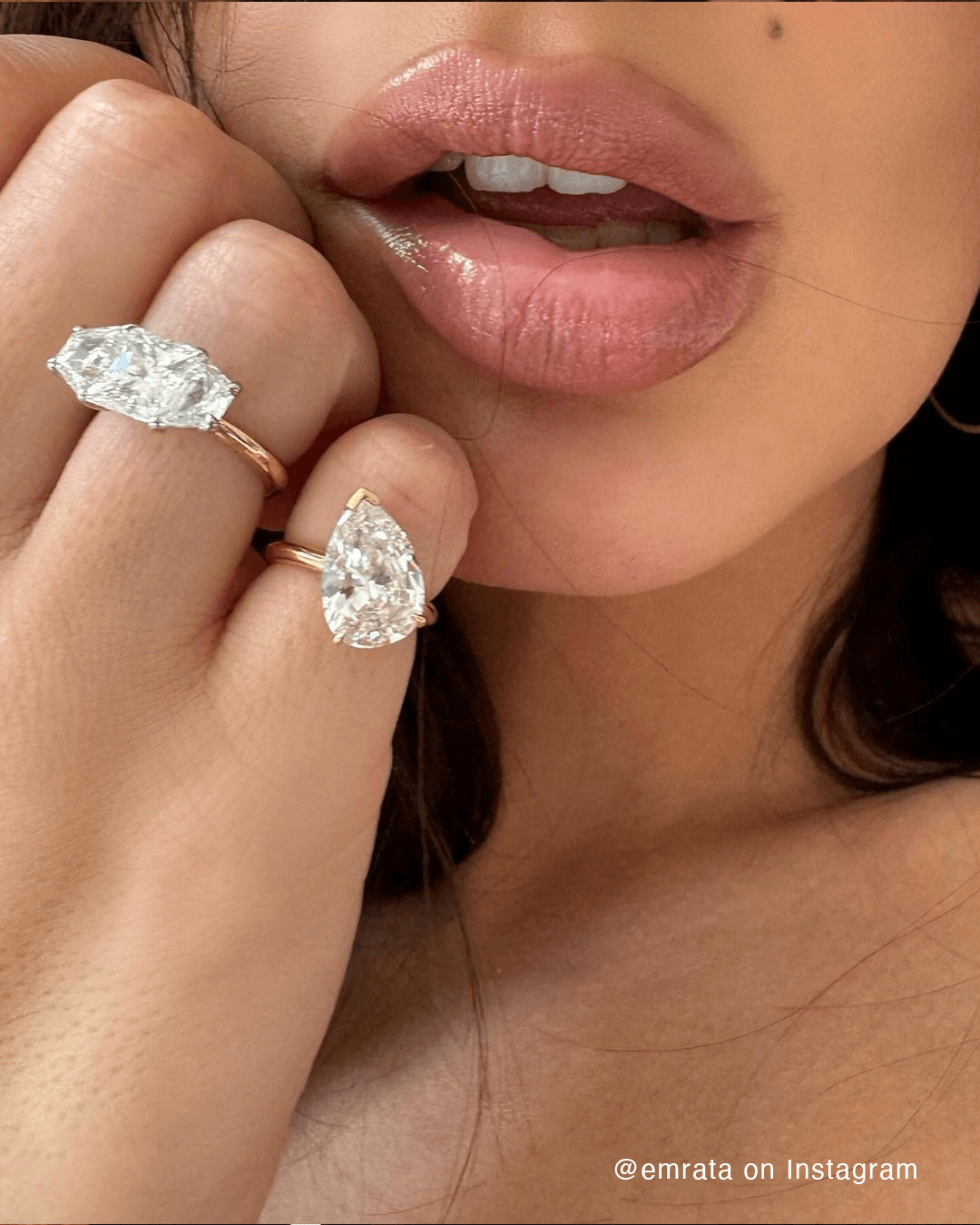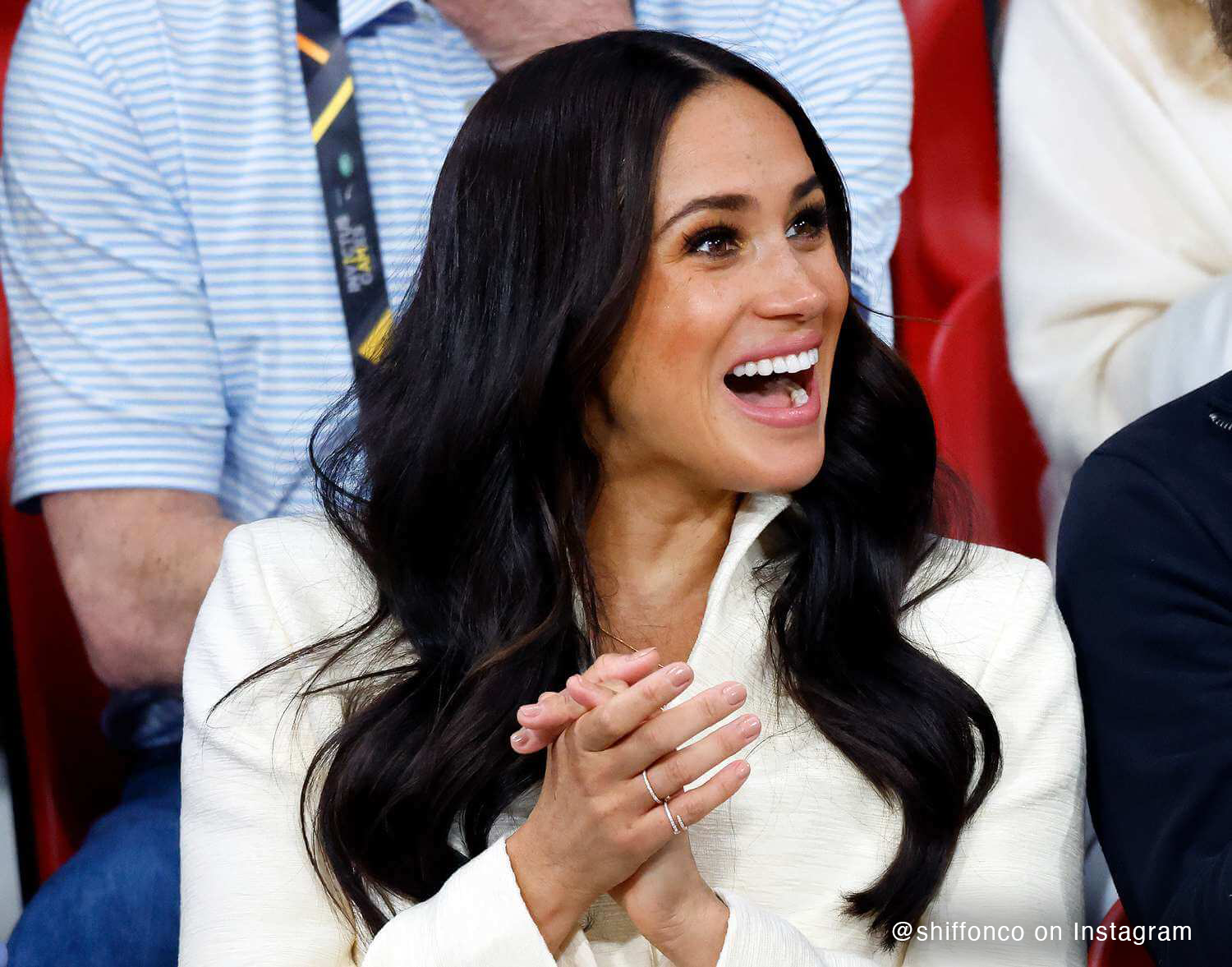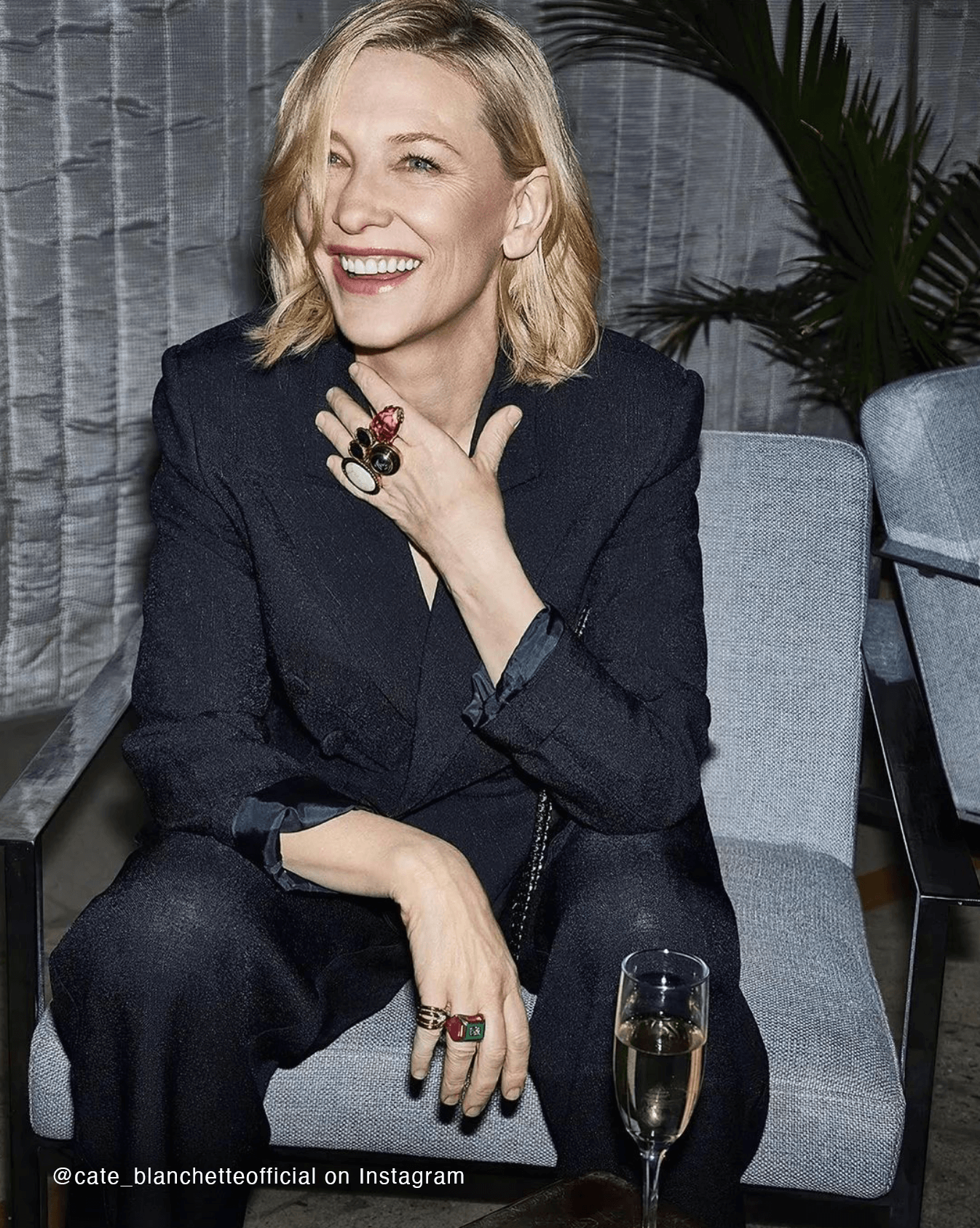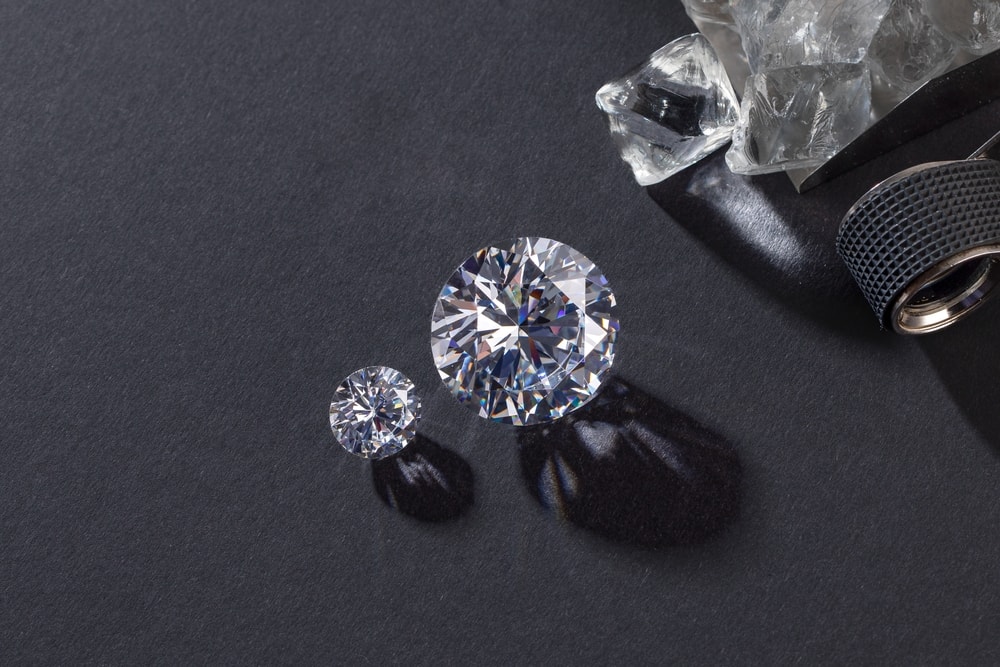Lab-grown diamonds are becoming an increasingly popular choice in the jewelry market, but many consumers still wonder — are they real? . Lab-grown diamonds offer the same chemical, physical and optical properties as natural diamonds, making them a durable and long-lasting choice, unlike diamond simulants like cubic zirconia and moissanite, which lack the same strength and brilliance. The key difference lies in their origin. While natural diamonds form deep within the Earth over millions of years, lab-created diamonds are created in controlled environments using advanced technology.
As consumers become more ecoconscious and budget-savvy, lab diamonds are gaining traction as an ethical and affordable alternative to mined diamonds. According to the Gemological Institute of America (GIA), these stones are indistinguishable from natural diamonds without specialized equipment. With more retailers offering lab-grown options, they are no longer seen as a niche product but a mainstream choice for engagement rings, fine jewelry, and investment pieces.
Despite their growing popularity, misconceptions still surround lab-grown diamonds. Are they as durable? Do they hold value? How do they compare visually to mined diamonds? Understanding the science and market trends behind these gems can help buyers make informed decisions. The truth behind lab-grown diamonds and why they are transforming the jewelry industry may surprise you — but there is no substitute for an in-person visit with your jeweler to learn all that you can about your options, first-hand, from an expert. At La Bijouterie, we think of this as a “must”, because your visit becomes an educational experience that helps you evaluate which direction to take.
Understanding Lab-Grown Diamonds
Lab-grown diamonds are created using two primary methods: High Pressure High Temperature (HPHT) and Chemical Vapor Deposition (CVD). Both processes replicate the natural diamond formation process but in a controlled laboratory setting, producing real diamonds with the same chemical and physical properties as mined ones.
The HPHT method mimics the intense heat and pressure found deep within the Earth’s mantle. A small diamond seed is placed in a carbon-rich environment and subjected to extreme conditions — temperatures exceeding 1,300–1,600 degrees Celsius and pressures of 870,000+ pounds per square inch. Over a period of several weeks to a few months, carbon atoms crystallize around the seed, forming a diamond. HPHT is often used to enhance or treat natural diamonds as well.
The CVD method involves placing a diamond seed in a sealed chamber filled with carbon-rich gas. The chamber is heated to around 800-1,000 C, causing carbon atoms to deposit layer by layer, gradually growing the diamond. This process typically takes a few weeks and allows for greater control over purity and color, able to produce high-quality, lab-grown diamond jewelry with fewer inclusions.
Both HPHT and CVD create diamonds that are virtually indistinguishable from natural ones without specialized equipment. As technology advances, these processes continue to improve, making lab-grown diamonds an increasingly attractive option for consumers seeking ethical, affordable and visually stunning gems.
Lab-Grown vs. Natural Diamonds: Physical and Chemical Properties
At a molecular level, a lab-grown diamond and a natural diamond are identical. Both are made of pure carbon, arranged in a crystalline structure that gives diamonds their hardness and brilliance. This means laboratory-grown diamonds have the same durability, refractive index and thermal conductivity as natural ones, making them just as “real” in terms of composition and performance.
However, despite their similarities, gemologists can distinguish lab-grown, synthetic diamonds from natural ones using specialized equipment. These methods analyze subtle differences that occur due to their formation processes.
One key distinction is UV fluorescence. Lab-grown diamonds often exhibit different fluorescence patterns under ultraviolet light compared to natural diamonds. Another technique, spectroscopy, detects variations in how diamonds absorb light. Natural diamonds may contain nitrogen impurities, while lab-grown diamonds — especially those made through the Chemical Vapor Deposition (CVD) method — often contain traces of silicon or show unique growth patterns.
Additionally, metallic inclusions can be a giveaway. Diamonds produced using the High Pressure High Temperature (HPHT) method sometimes contain small metal inclusions from the growth process, whereas natural diamonds typically have mineral-based inclusions.
Because these differences are nearly impossible to see with the naked eye, reputable laboratories like the Gemological Institute of America (GIA) use advanced testing to identify a diamond’s origin. Whether natural or lab-grown, both types are stunning and durable, but buyers should always request certification to confirm their diamond’s authenticity and formation process.
Ethical and Environmental Considerations
One of the main reasons consumers are turning to lab-grown diamonds is the ethical concerns surrounding traditional diamond mining. Natural diamonds are often sourced from regions where mining practices have historically been linked to environmental destruction, unsafe labor conditions and, in some cases, conflict financing. While the diamond industry has made strides in promoting ethical sourcing through initiatives like the Kimberley Process, concerns about human rights violations and ecological damage persist.
Lab-grown diamonds offer a more transparent and ethical alternative. Because they are created in controlled environments, they eliminate the risks associated with exploitative labor and conflict funding. This makes them an appealing choice for consumers who prioritize sustainability and ethical responsibility.
From an environmental standpoint, a lab diamond generally has a smaller carbon footprint than a mined diamond. Traditional diamond mining requires large-scale excavation, often disrupting ecosystems and consuming vast amounts of water and fossil fuels. In contrast, man-made diamonds are produced using electricity, which, depending on the energy source, can significantly reduce environmental impact. However, not all lab-grown diamonds are created sustainably — some production methods still rely on fossil-fuel-powered energy.
As consumer demand for sustainability grows, some companies are investing in renewable energy to further reduce the footprint of lab-grown diamonds, making them an increasingly ecofriendly option for conscientious buyers. This shift raises important questions about the future of lab-grown diamonds vs. real diamonds, particularly in terms of long-term value, environmental impact and consumer perception. As technology advances and sustainable practices improve, lab-grown diamonds may continue to gain traction as a mainstream alternative to mined diamonds.
Cost and Market Perception
One of the biggest advantages of lab-grown diamonds is their lower price compared to natural diamonds. On average, lab-grown diamonds cost 80-90% less than their mined counterparts, making them an attractive option for first-time buyers looking for affordability without sacrificing quality. This price difference allows consumers to purchase a larger or higher-quality diamond for the same budget, which is especially appealing for engagement rings and fine jewelry.
However, when it comes to resale value and investment, lab-grown diamonds differ significantly from natural ones. Natural diamonds tend to hold value better over time due to their rarity and established market demand. In contrast, lab-grown diamonds are mass-produced, and their resale value is zero. Some experts believe lab-grown diamonds may continue to decrease in price as technology advances, further affecting their long-term investment potential.
Another factor influencing price and perception is post-growth treatments. Many lab-grown diamonds undergo HPHT annealing or irradiation to enhance color and clarity. While these treatments improve a diamond’s visual appeal, they can also impact pricing, as untreated lab-grown diamonds may be perceived as more desirable. Transparency about these enhancements is crucial, as buyers should be aware of any treatments that affect the stone’s appearance and value.
Ultimately, while lab-grown diamonds offer an affordable and ethical alternative, consumers should consider long-term value and market trends before making a purchase.
How to Choose Between Lab-Grown and Natural Diamonds
When deciding between a lab-grown and natural diamond, evaluating the 4Cs — cut, color, clarity and carat weight — is essential. Cut impacts brilliance, so an Excellent or Ideal cut is recommended for maximum sparkle. Color is graded from D (colorless) to Z (noticeable tint), with near-colorless (G-H) diamonds offering a balance of beauty and value. Clarity refers to internal inclusions; while natural diamonds may have mineral inclusions, lab-grown diamonds often show growth-related inclusions or metallic traces from HPHT diamond production. Lastly, carat weight affects size and price, with lab-grown options offering more carat weight for the same budget.
Certification is crucial for ensuring authenticity and quality. Lab-grown diamonds should come with a grading report from a recognized organization, detailing attributes such as growth method and treatments. Leading certification bodies include the International Gemological Institute (IGI) and the Gemological Institute of America (GIA).
These organizations use advanced technology like spectroscopy and fluorescence imaging to distinguish lab-grown from natural diamonds. Spectroscopy analyzes light absorption to detect trace elements, while fluorescence imaging reveals unique growth patterns found in CVD and HPHT diamonds.
Ultimately, the choice between lab-grown and natural diamonds depends on personal preference, budget, and long-term value considerations. Whether prioritizing cost, sustainability or rarity, buyers should always verify certification to ensure they’re making an informed purchase.
The La Bijouterie Experience
At La Bijouterie, jewelry shopping is more than just a transaction — it’s a personalized, family-oriented experience. As a family-run jewelry store, La Bijouterie takes pride in building lasting relationships with customers, ensuring that each visitor to our San Francisco store receives expert, tailored guidance that you can’t get online. Whether you’re choosing an engagement ring, anniversary gift or exploring the differences between lab-grown and natural diamonds, our in-store team is dedicated to helping you make an informed and confident decision.
With years of expertise in fine jewelry, La Bijouterie’s knowledgeable staff provides honest insights on diamond quality, certification and value, ensuring customers understand every aspect of their purchase. Whether you’re seeking a classic natural diamond or an ethical, budget-friendly lab-grown alternative, the team takes the time to educate you on cut, color, clarity and carat weight, helping you find the perfect stone within your budget.
For those who value a hands-on, personalized shopping experience, visiting La Bijouterie offers a level of care and attention that online retailers simply can’t match. Book an appointment for one-on-one guidance, expert recommendations and a warm, welcoming atmosphere. Let La Bijouterie help you find the perfect diamond for life’s most meaningful moments.



.png)








